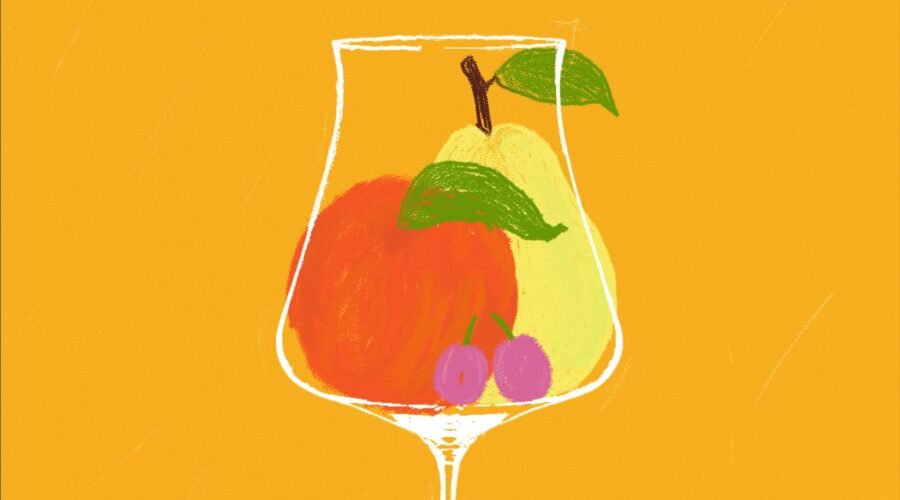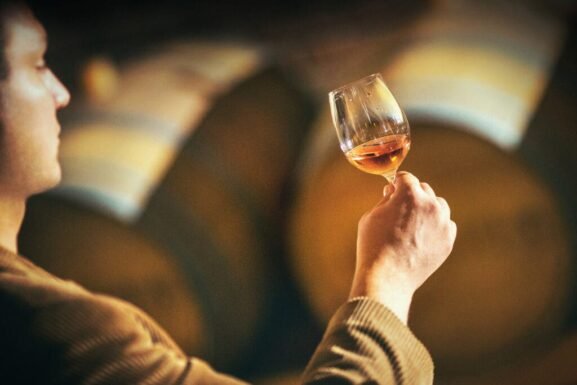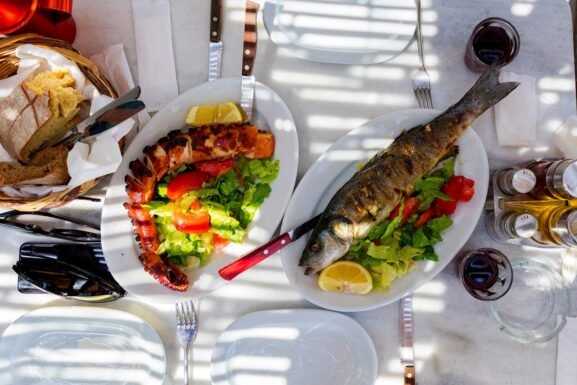How to Describe Wine Using Fruit Clusters
Tasting and analyzing wine is an art form that involves understanding the complexities and nuances of many different wine varieties. There are thousands of terms to describe a wine’s flavors and aromas, which can be confusing and sometimes straight-up overwhelming.
This is why I am a believer in the “Fruit First” theory, as the fruit character of a wine is typically the most prominent and enjoyable. But how do you know which fruits to look for in which wines?
To help organize these various fruity characteristics, The WSET (Wine & Spirit Education Trust) Systematic Approach to Tasting utilizes seven different fruit clusters: four for white wines and three for red.
You May Also Like: 3 Reasons Why You Should Get WSET-Certified Through Wine Enthusiast Academy
Rather than focusing on picking out a specific fruit—say, apple versus pear or peach versus nectarine—this system begins with noting what cluster (or fruit group) can be detected first.
“WSET’s Systematic Approach to Tasting uses clusters because it can be a helpful way for a taster to develop their ability,” says David Rudman, executive director for WSET Americas & WSET Asia Pacific. “While a novice taster might not readily identify ‘lime’ as an aroma in wine, they might be able to identify ‘citrus fruit.’ It is good practice to proceed from general descriptors to more specific ones.”
These clusters also keep the language to describe wines on a level playing field, so that everyone is basically speaking the same language when discussing the particular fruit character of a wine.
White Wines
Green fruit: This cluster includes flavors and aromas of apple, pear, gooseberry and grape. Examples include Chardonnay wines, for their apple and pear notes, and Muscat, which have a grape character.
Citrus fruit: Wines with citrus fruit will exude flavors and aromas of lemon, lime, grapefruit and orange peel. Common wines with noted citrus fruits are Sauvignon Blanc, Albariño and Pinot Grigio.
Stone fruit: Think about wines like Viognier and Riesling for their beautiful expressions of peach, apricot and nectarine fruit character.
Tropical fruit: Wines with tropical fruits can display mango, banana, lychee and passionfruit aromas. Some notable examples here are Gewürztraminer (lychee), Sémillon, Marsanne and some Chardonnay based on climate and malolactic fermentation (which can lead to banana aromas).
Red Wines
Red fruit: Red grapes that possess red fruit characteristics, such as cherry, raspberry and strawberry, include Pinot Noir, Grenache, Gamay and Sangiovese.
Black fruit: Cabernet Sauvignon, Tempranillo, Merlot, Malbec and Syrah inherently display blackberry, black cherry, blueberry and blackcurrant notes, depending on the style of wine.
Dried fruit: Red wines that show off aromas and flavors of raisins, dates and prunes can be described as showing dried fruit character. This often happens as wine ages in the bottle, which encourages further development of the fruit over time.
Using these cluster descriptors can help lead you down a path to identifying more nuanced fruit aromas and flavors in a wine, which also helps to fine-tune your palate the more you do it. Say you smell black cherry in a particular California Cabernet. You may want to dig in to try and find other black fruits such as black currant and blackberry. More often than not, they will be present in the glass.
That said, not all bottles fit neatly into one of the seven categories above. Some wines may have flavors and aromas that are a combination of two or more categories, and others may boast some notes from a specific cluster but not all the flavors. For example, a New Zealand Sauvignon Blanc will most likely have citrus fruit aromas, like grapefruit and lime zest; however, you’d be hard-pressed to find orange peel on these wines.
You May Also Like: How Red Wine Is Made
Of course, fruit is far from the only primary characteristic that can be identified in wine. Spice, floral, vegetal, herbaceous and terroir-driven components are also important elements to consider. Then, of course, you can find secondary characteristics that come from the winemaking process and aging, and tertiary aromas and flavors that develop as the wine ages in the bottle.
But it all starts with the fruit—and learning to identify those aromas and flavors are the best entry point for beginning the study of wine.
Published: February 19, 2024


